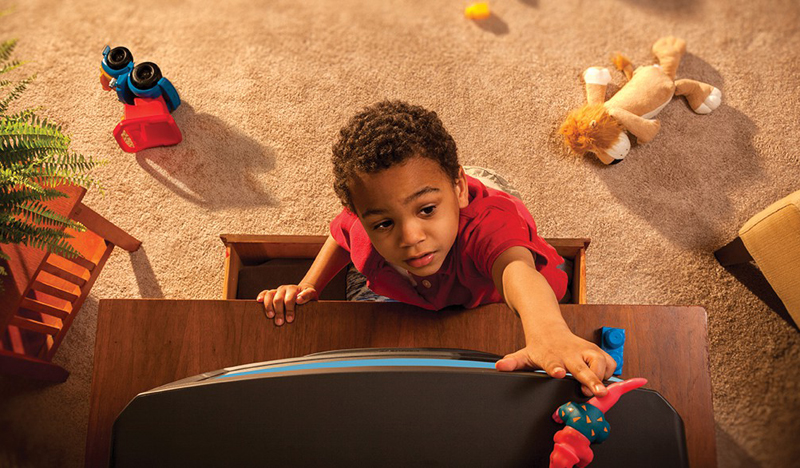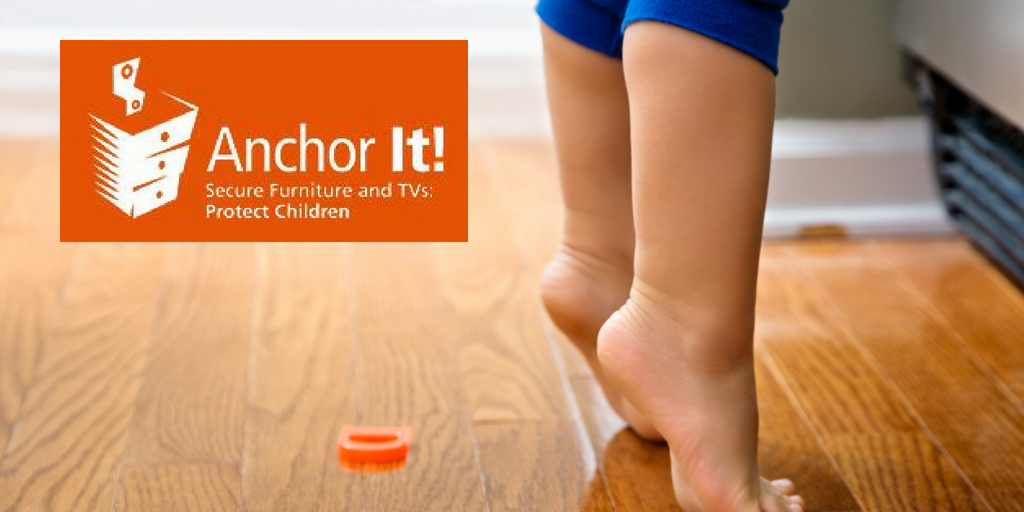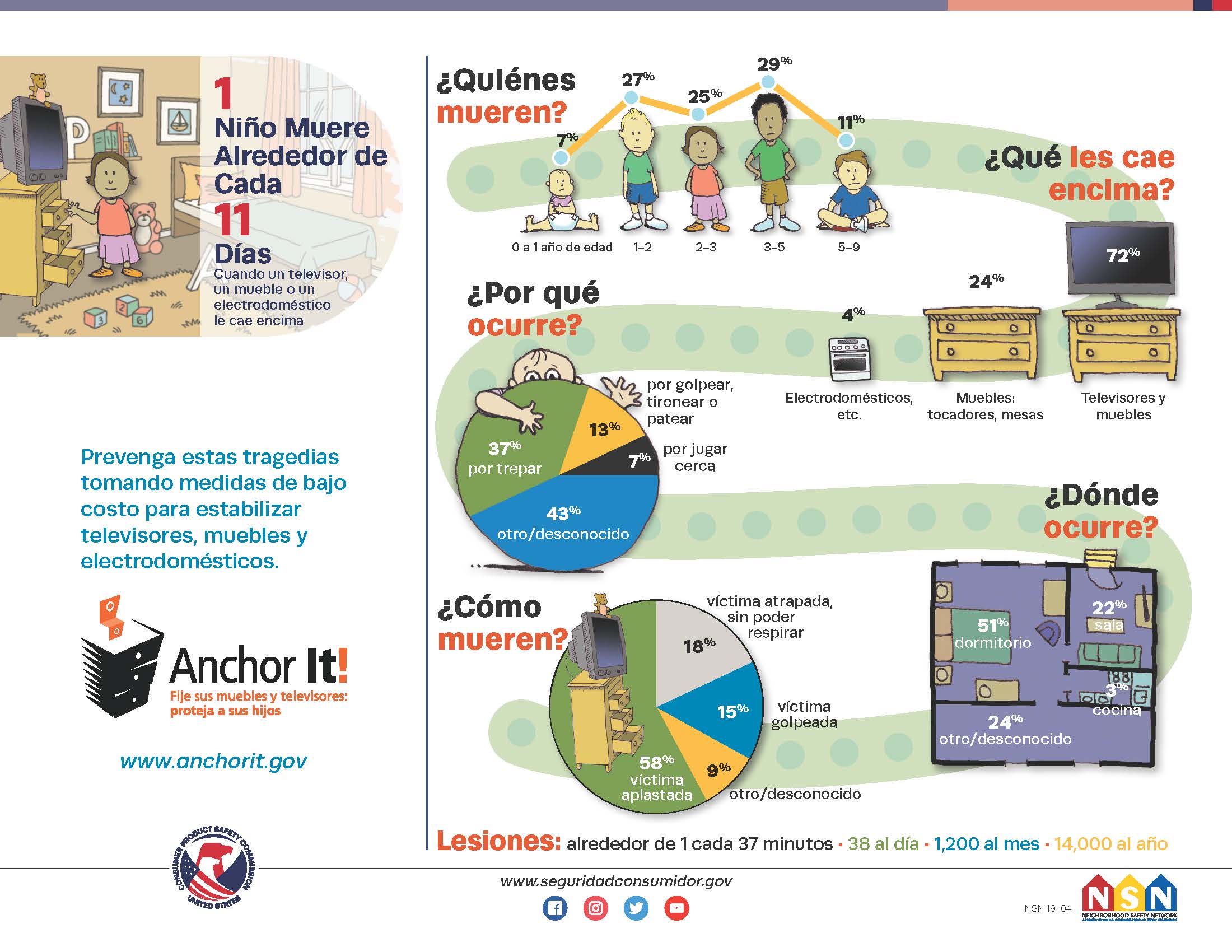
Share On Social!
Sadly, a parent’s worst nightmare can happen.
One child dies every 11 days on average when a TV or furniture falls onto him or her, according to the U.S. Consumer Product Safety Commission, which created the Anchor It! safety campaign.
But there are ways to prevent this tragedy from becoming a reality.
Why Do Tip-Over Incident Happen?
Unsecured TVs, furniture, and appliances lurk in every room.
The biggest problem is balance.
 “When someone pulls a dresser drawer open … the furniture’s center of gravity shifts outward along with it,” according to a report by Popular Science. “A weight hung on an open drawer versus one hung on a closed drawer could have significantly different effects—the open drawers make it much more likely to tip.”
“When someone pulls a dresser drawer open … the furniture’s center of gravity shifts outward along with it,” according to a report by Popular Science. “A weight hung on an open drawer versus one hung on a closed drawer could have significantly different effects—the open drawers make it much more likely to tip.”
Tall furniture is required to come with brackets to anchor it to walls.
But for dressers 30 inches tall or shorter, safety standards are entirely voluntary.
Consumer Reports recently tested short dressers and found that half couldn’t support a 50-pound weight hanging off the front of an extended drawer.
“Companies decide whether or not to adhere to the guidelines, though even manufacturers that do adhere don’t have to test any dresser 30 inches or less in height. But that cutoff is fairly arbitrary,” Popular Science reported.
How Many Tip-Overs Occur?
The U.S. Consumer Product Commission recently released new data on tip-overs.
- Most tip-overs are TVs (72%), followed by furniture (24%) and appliances (4%).
- Tip-overs usually occur in the bedroom (51%) or living room (22%)
- 28,300 emergency-room trips resulted from tip-overs from 2015-2017.
- 542 deaths resulted from tip-overs since 2000. Most victims are younger than 5 years old (89%).
Check out the full data in English and Spanish.
How Can I Prevent a Tip-Over?
To prevent a tip-over tragedy, the U.S. Consumer Product Commission suggests:
- Secure TVs. Televisions should only be placed on furniture designed to hold a TV, such as television stands or media centers. Televisions that are not wall mounted should still be anchored to the wall. Mount flat-screen TVs to the wall or to furniture to prevent them from toppling over. Recycle older CRT televisions.
- Follow instructions. Follow the manufacturer’s instructions to secure TVs and furniture properly.
- Check and register your furniture. Check these listings to see if IKEA, Target, and other manufacturers have issued recalls in recent years due to their products tipping over during normal use. “This is, incidentally, why you should register your products—you’ll get an email if something gets recalled,” according to Popular Science.
- Secure top-heavy furniture. Anchor you existing furniture with inexpensive anti-tip brackets. New furniture, such as dressers, are sold with anti-tip devices. Install them right away.
- Remove tempting objects. Remove items that might tempt kids to climb, such as toys and remote controls, from the top of the TV and furniture.
What Else Can Help Prevent Tip-Overs?
Bilingual Videos. The Anchor It! campaign has a new video to help parents overcome common barriers related to anchoring furniture.The video shows how to find the right anchoring hardware and anchoring kits, and how long it actually takes to anchor a TV or furniture. Watch the new video in English or Spanish.
Bilingual Outreach. In May 2019, Carla Coolman of the Anchor It! campaign attended the WeAllGrow Summit in Long Beach, Calif., to educate Latina influencers about preventing tip-over incidents.
The event gathered 500 Latinas influencers, content creators, and media experts from top companies such as Instagram, Facebook, YouTube, Nielsen, HBO, Univision Network, and mitú.
Increased Furniture Standards. Consumer Reports is calling for increased standards. That goes for shorter furniture, too.
“What we found over the course of many months is that manufacturers could make dressers stable enough to pass a more rigorous test,” James Dickerson of Consumer Reports told Popular Science, “and the current voluntary standard does not cover enough dressers, does not protect enough children, and is not mandatory.”
Explore More:
Maternal & Child HealthBy The Numbers
142
Percent
Expected rise in Latino cancer cases in coming years




